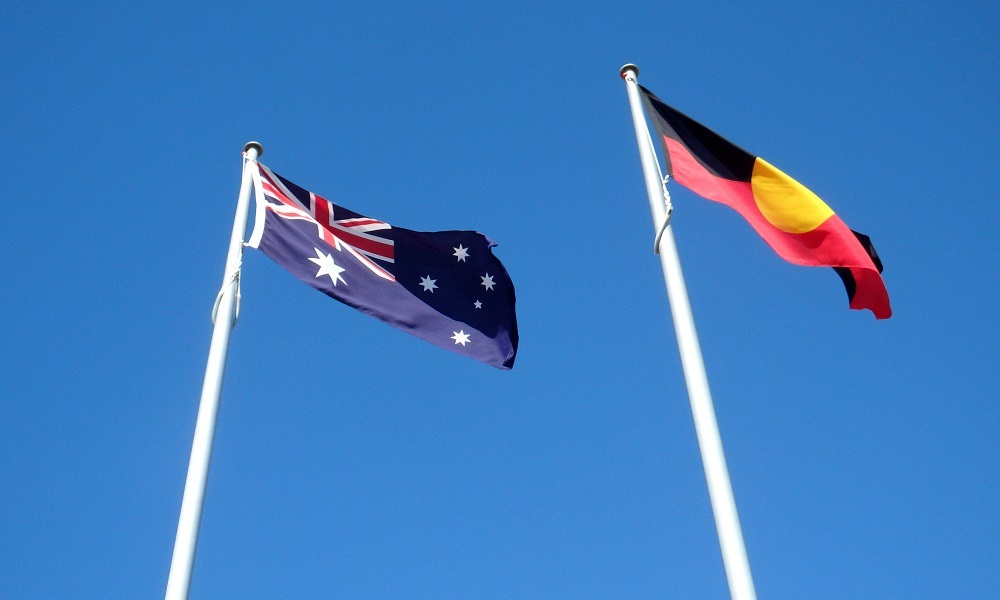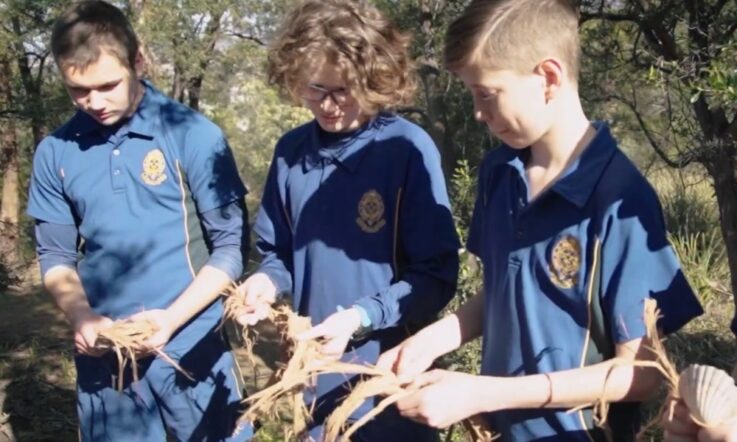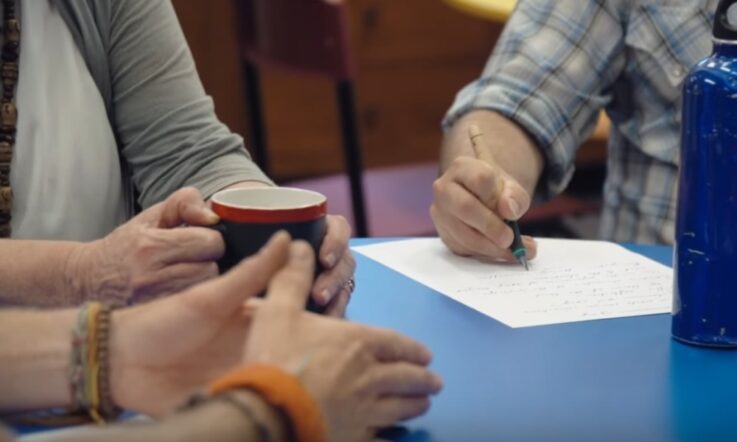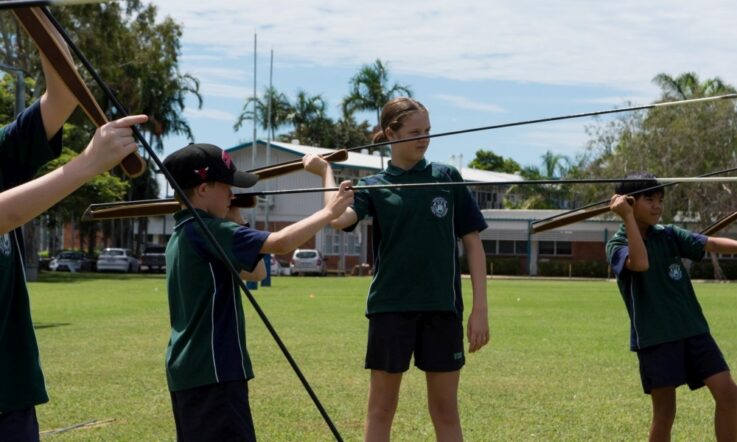A Reconciliation Action Plan (RAP) is a formalised commitment to reconciliation and involves documenting how your school is promoting reconciliation in the classroom and with the community.
At Briar Road Public School in Southwest Sydney, Aboriginal culture and education is embedded in the curriculum. Almost half (about 47%) of students are First Nations students and the school also has 2 Aboriginal Culture and Curriculum teachers employed.
Principal Tammy Anderson has been at the school since 2002 and is in her tenth year as school leader. In 2021, the school was recognised for their reconciliation initiatives by being named a finalist in the Schools category for the Narragunnawali Reconciliation in Education Awards. The annual awards are now in their fourth year and acknowledge schools for outstanding commitment to reconciliation.
‘We were very humbled that we were even given the chance to put the school forward in that final round. We knew we were up against some fantastic candidates and we're very proud of the work,’ Anderson tells Teacher.
‘It's not lost on me how fortunate I've been to secure a staff who have a commitment to reconciliation. A commitment to being more [and] doing more in the space. We honestly haven't even scratched the surface. I'm excited to see where we take it and I know that we've got more to give, so I'm excited to see the school continue to lead in the space. And that's due to the talented staff and community and kids that we have.’
A commitment to reconciliation
At Briar Road Public School, Aboriginal education is a priority and is featured in their 3 strategic directions. ‘It's well resourced … we do make sure that school funds are allocated against the priority,’ Anderson shares.
‘I think when you put that up front, it says what your commitment is to Aboriginal education and First Nations knowledges in the school. And then when we dive into how that falls in the classroom, there's been a lot of hard work by [Aboriginal Culture and Curriculum teachers] Jason and Jess, and the team, to develop cultural competency frameworks that shape up what we expect our children and staff to look and feel like over their course of time at Briar Road.
‘We haven't just relied on curriculum perspectives. They’re one part. But when we're talking about truth telling and reconciliation, through our work with Narragunnawali, we've learnt that we need to go deeper. So we've taken quite a deep approach to planning for those perspectives in classrooms and give real lived experiences of Aboriginal and Torres Strait Islander people.’
Embedding cultural perspectives in the curriculum
At the school, the Aboriginal Culture and Curriculum teachers work directly with classroom teachers on culture and curriculum.
An example of this that Aboriginal Culture and Curriculum teacher Jason Sampson shares is teaching students to throw a boomerang when learning about aerodynamics by discussing Science and Mathematical concepts like lift and drag.
‘That work comes from not just us giving an Aboriginal perspective. That work comes from a team environment of having a lead teacher of Science saying, “I've got these lessons here. Can I put an Aboriginal perspective there?” and then working together to make sure that it fits and moulds into a really good lesson,’ Sampson shares with Teacher.
‘There's lots of other cultural backgrounds [in the school] that we can make relations to as well. And some teachers do it themselves. They have a different identity that they bring their own spin and story to it. And that, I think, just makes for a greater connection with our kids and our teachers. That student-teacher relationship certainly strengthens from that as well.’
This collaborative work extends to students in preschool, so that by the time they begin kindergarten, they have prior knowledge of Aboriginal culture that can be built on. ‘We really are striving to make sure that our kids are culturally competent when they leave here [and] move on to high school and to other settings after that,’ Sampson says.
Partnering with the community
Working closely with the Briar Road Public School community is also embedded in their planning. There are many groups in the school community that are continually consulted, such as the Aboriginal Education Consultative Group (AECG), student advisory groups (including a Junior AECG) and their Aboriginal Parent Body.
‘Each term, [meeting with the Aboriginal Parent Body] gives us an opportunity to check in with our families and pulse check on whether we're going in a joint journey, or where we’re off track, and they will keep us accountable,’ Anderson shares.
At a school where a sense of belonging is critical, Sampson adds, ensuring parents are included in everything they do and have the same experience students have is an important element. ‘They are our key stakeholders in all of this … we want to make sure that they can reinforce what we're doing here and the best way to do that is to make sure that they understand everything that we're doing,’ he says.
‘We've done lots of different things like parent excursions, getting our parents out experiencing things that our kids experience. We have NAIDOC dinners at the school. We really celebrate learning and culture together and I think that's one of the strong points for our school, that we definitely make sure that we are going hand in hand with the community, because the reality is we can't get kids here and get them having a sense of belonging if families don't buy into what we're building and delivering either,’ Anderson says.
Moving away from ad hoc approaches to Aboriginal education
During the time that Anderson and Sampson have been at the school, Briar Road has moved from integrating cultural lessons and experiences on an ad hoc basis to embedding First Nations perspectives into the curriculum.
In the past, the school community would focus on Aboriginal education around major celebrations and events, but the work of the Aboriginal Culture and Curriculum teachers – which, as well as planning lessons with lead teachers, involves team teaching some lessons – has meant the lead teachers are able to deeply embed Aboriginal perspectives across all units of work.
‘It’s been something that’s made it sustainable and embedded in everyday practice right through Science, History and Geography, there’s not just those ad hoc approaches or lessons anymore taught at those major celebration events. It’s lessons and content being taught in everyday practice,’ Sampson explains.
‘That old stigma of “I'm not sure how to teach that because I don’t know if it's culturally appropriate” is something that doesn't exist here because people are far more confident because it's been modelled to them.’
From Anderson’s perspective, ‘it was around creating a cultural safety where we could have and challenge things that people think and feel in order to get to a space where the school felt culturally safe. All staff members, whether they are Aboriginal or not, felt safe to explore the space quite deeply.’
As a school leader, how confident are your staff in integrating First Nations perspectives into their teaching? Have they had the opportunity recently to build their knowledge in this area?
Do you have a Reconciliation Action Plan? If not, what are some first steps you could take to begin this process? How do you think the development of a RAP could positively impact your school community?



